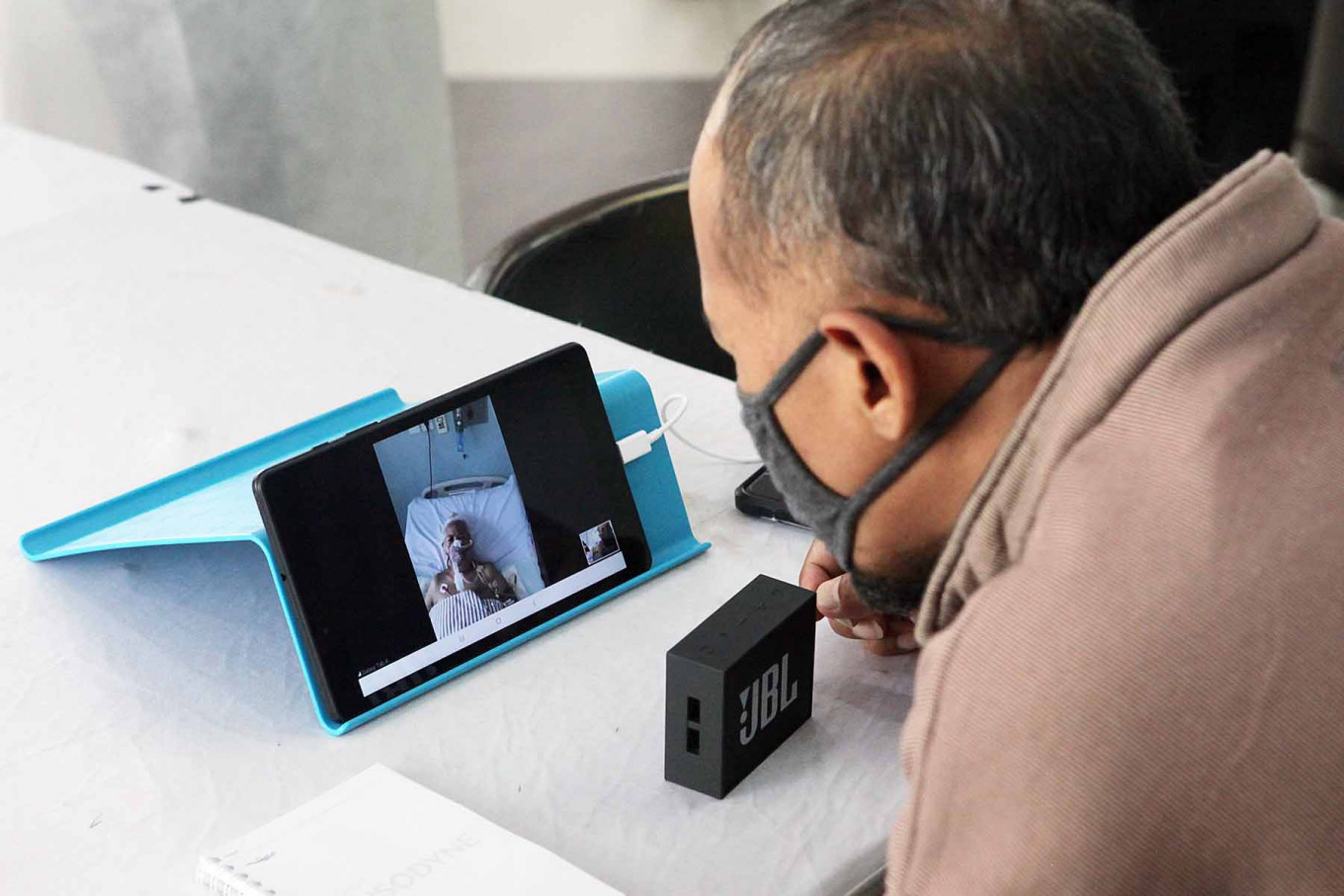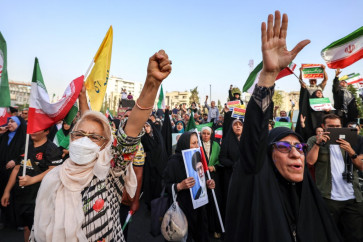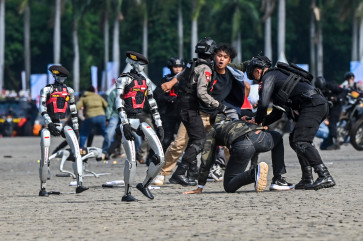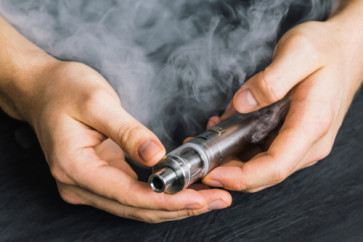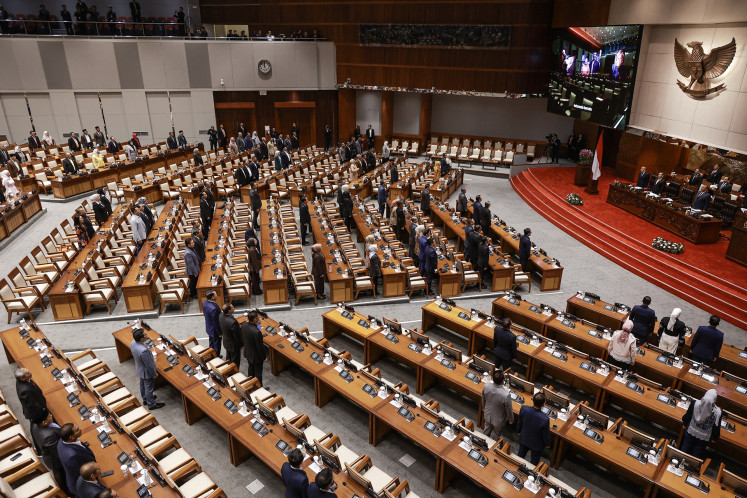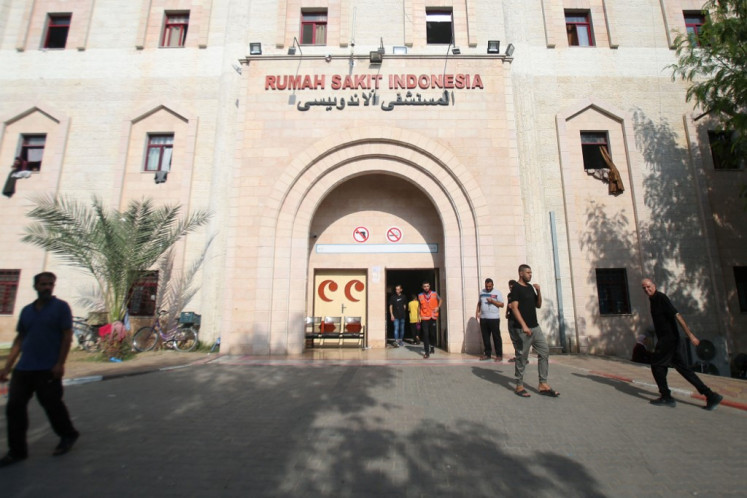Popular Reads
Top Results
Can't find what you're looking for?
View all search resultsPopular Reads
Top Results
Can't find what you're looking for?
View all search results'Pull the brake': Unease as more than half of COVID-19 beds in Jakarta in use
Change text size
Gift Premium Articles
to Anyone
J
akarta is reaching a critical point in its fight against COVID-19 as it sees rising hospitalization of COVID-19 patients, prompting concerns that it would have to increase its healthcare capacity and reimpose stricter curbs.
Jakarta Governor Anies Baswedan said in a press release late on Thursday that 65 percent of 4,456 isolation beds and 67 percent of 483 intensive care unit (ICU) beds designated for COVID-19 patients were now occupied.
"In the past two weeks, there has been a trend of increasing isolation and ICU room [occupation] in Jakarta. [...] The [occupancy rates] have varied over a month, ranging from 40 to 50 percent in July," Anies said.
Anies previously said in July that the administration had prepared 4,556 isolation beds and 659 ICU beds for COVID-19 patients, higher than the figures mentioned in the release.
However, city officials also noted that the number of available ICU beds have shown a significant decrease due in part to reallocation to non-COVID-19 patients – entire ICU wards can be redesignated under such circumstances.
National COVID-19 task force spokesperson Wiku Adisasmito said during a press briefing on Tuesday that the bed occupancy rate, which he referred to as bed utilization per month, stood at 66 percent in the capital.
"There is still some buffer before we reach 80 percent; this is the [safe] bed occupancy rate that usually applies at hospitals, so they can carefully and promptly treat patients,” Wiku told reporters.
As of Wednesday, the city recorded 27,863 confirmed cases, with 9,044 active cases and 981 deaths. Among the active cases, 2,714 patients are currently hospitalized. The hospitalized patients also include 1,221 suspected cases of COVID-19 and two probable cases.
Jakarta Health Agency head Widyastuti said during a webinar on Aug. 6 that the capital was, at the moment, in a “very critical condition”, as more than half of the bed capacity was used on a daily basis.
Read also: Jakarta still struggles with virus despite improved health facilities
"We have to be alert. If we don't improve our bed capacity – daily testing capacity can reach 5,000 specimens from the ones we conduct free of charge, in addition to the ones carried out by private labs – then [hospitals] can collapse, because there simply is not enough capacity," she said.
Data provided by Widyastuti during the webinar show that, from Aug. 1 to 4, the isolation bed occupancy rate stood at 58 percent and the ICU bed occupancy rate at 61 percent.
On July 24, Anies said the isolation bed occupancy rate was at 44 percent and ICU bed occupancy rate at 32 percent. This meant ICU utilization almost doubled within less than two weeks.
Widyastuti said the city had been improving its bed capacity to match its testing capacity as well as tracing efforts by community health centers.
Jakarta had eight referral hospitals at the beginning of the pandemic and now had 67, she said, adding that the administration had further resorted to experts' estimations to predict the number of cases it would see and the number of hospital beds as well as human resources it would need to prepare.
As the city began to gradually reopen its economy since early June, the administration has ramped up testing capacity, reaching four times the benchmark set by the World Health Organization (WHO) of 1 test per 1,000 people per week.
Officials have largely attributed the city's soaring case number to this fact, in addition to its aggressive contact-tracing, although the positivity rate remained higher than the WHO suggestion of 5 percent, reaching 8.7 percent in the past week.
Jakarta Health Agency data show that daily isolation bed occupancy rates in the city's 67 referral hospitals began to gradually increase to around 50 percent after July 20.
Before then, the rate had been fluctuating at around 25 percent since the beginning of May, with the ICU occupancy rate consistently higher than the isolation bed occupancy rate, although it mostly stayed below 50 percent.
Read also: ‘It was too crowded’: Patients find it hard to get COVID-19 tests, treatment
In March, peak occupancy across both bed categories reached 200 percent on some days. By May, peak occupancy had come down to 71 percent for isolation beds and 121 percent for ICU beds.
The bed occupancy rate and length of stay in hospitals stood at 83.99 percent and 2.57 days, respectively, in March; 112 percent and 6.33 days in April; 43.06 percent and 7.68 days in May; 40.58 percent and 7.69 days in June and 45.20 percent and 7.06 days in July.
The Jakarta administration decided on Thursday to once again extend its transition from large-scale social restrictions (PSBB) for another two weeks beginning on Friday. The city started the transition on July 5.
Governor Anies in mid-July hinted at the possibility of the administration pulling "the emergency brake", which would restore the stricter PSBB if cases continued to soar amid concerns of rising positivity rates. During PSBB, the city allowed only eight essential sectors to operate.
University of Indonesia epidemiologist Tri Yunis Miko urged the administration to pull the brake now, before cases soared beyond the health care system’s capacity.
Increasing the number of beds, while necessary to anticipate further spikes, was not the solution, he said, insisting that eliminating sources of transmission was key.
"How many more beds do we need to add? Do we know how many cases we'll see in the future? Testing is increasing, but we can't guess the number of cases and how many of these cases will be severe. We can't be sure of it, because it depends on the population," he said on Thursday.
He said that extending the transition phase was "like doing nothing", with a tightening and easing of restrictions being done at the same time.
Read also: Our health system's capacity vs demand from large-scale social distancing
Reimposing the PSBB in full, however, was not an option, given the economic concerns of the government, Miko acknowledged. Even so, he suggested that the city reimpose stricter restrictions at lower levels of administration, such as districts and subdistricts.
While doing this, the administration must also ensure that companies let employees work from home and distribute aid to those who may potentially lose their income, he said.
Editor's Note: Updated to include disclaimer by the Jakarta administration that reallocation of ICU wards for non-COVID-19 patients have also contributed to the sharp decline in available ICU beds in the capital.

